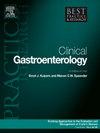Liver assistive devices in acute liver failure: Current use and future directions
IF 3.2
3区 医学
Q2 GASTROENTEROLOGY & HEPATOLOGY
Best Practice & Research Clinical Gastroenterology
Pub Date : 2024-12-01
DOI:10.1016/j.bpg.2024.101964
引用次数: 0
Abstract
Acute liver failure (ALF) is a rare syndrome where rapid deterioration of liver function occurs after an acute insult in a patient without prior chronic liver disease and leads to jaundice, hepatic encephalopathy (HE), and oftentimes multiorgan failure (MOF). At this time, the only definitive treatment for ALF is LT but some patients, particularly APAP-induced ALF patients, may have ongoing regenerative capacity of the liver and may not require LT with ongoing supportive management. As a result, extracorporeal liver support (ECLS) has been a topic of interest both as a bridge to LT and as a bridge to spontaneous recovery and aims to remove damaging toxins that further aggravate liver failure, stimulate regeneration of the liver, and improve pathophysiologic consequences of liver failure. There are currently two categories of ECLS (artificial and bioartificial). Artificial ECLS does not incorporate active hepatocytes and are based on the principles of filtration and adsorption and includes renal replacement therapy (RRT), plasma adsorption including plasma exchange and Prometheus (Fractionated Plasma Separation and Adsorption), and albumin dialysis including MARS (Molecular Adsorbent Recirculating System) and SPAD (Single Pass Albumin Dialysis). Bioartificial ECLS incorporates active hepatocytes (human or porcine in origin) to improve liver detoxification capacity and to support hepatic synthetic function and includes ELAD (Extracorporeal Liver Assist Device) and HepatAssist.
急性肝衰竭中的肝辅助装置:目前的使用和未来的方向。
急性肝衰竭(ALF)是一种罕见的综合征,在没有慢性肝病的患者急性损伤后,肝功能迅速恶化,导致黄疸、肝性脑病(HE)和多器官功能衰竭(MOF)。目前,ALF的唯一确定治疗方法是肝移植,但一些患者,特别是apap诱导的ALF患者,可能具有持续的肝脏再生能力,可能不需要肝移植和持续的支持性治疗。因此,体外肝支持(extracorporeal liver support, ECLS)作为肝移植的桥梁和肝自然恢复的桥梁,一直是人们感兴趣的话题,旨在清除进一步加重肝衰竭的有害毒素,刺激肝脏再生,改善肝衰竭的病理生理后果。目前ECLS有两类(人工和生物人工)。人工ECLS不包括活性肝细胞,基于过滤和吸附原理,包括肾脏替代疗法(RRT),血浆吸附包括血浆交换和Prometheus(分离血浆和吸附),白蛋白透析包括MARS(分子吸附剂循环系统)和SPAD(单次白蛋白透析)。生物人工ECLS包含活性肝细胞(来源于人或猪),以提高肝脏解毒能力并支持肝脏合成功能,包括ELAD(体外肝脏辅助装置)和HepatAssist。
本文章由计算机程序翻译,如有差异,请以英文原文为准。
求助全文
约1分钟内获得全文
求助全文
来源期刊
CiteScore
5.50
自引率
0.00%
发文量
23
审稿时长
69 days
期刊介绍:
Each topic-based issue of Best Practice & Research Clinical Gastroenterology will provide a comprehensive review of current clinical practice and thinking within the specialty of gastroenterology.

 求助内容:
求助内容: 应助结果提醒方式:
应助结果提醒方式:


